MARIANI’SVirtual
Gourmet
April 22,
20012
NEWSLETTER
HOME
| BOOKS
| CONTACT
| ABOUT

❖❖❖
THIS WEEK
TIMES
CHANGE. . . EVEN IN ISRAEL
by Brian Freedman
NEW YORK CORNER
ACME
by John
Mariani
by Mort Hochstein
❖❖❖
TIMES CHANGE. . .
EVEN IN ISRAEL
by Brian Freedman

photo
by Brian Freedman
I’d been walking
around Tel Aviv for hours, dodging the occasional
rain squall and marveling at how deserted the city
was on a Shabbat Saturday morning. Aside from the
groups of tourists, their guides a collective Babel
of yelling and corralling and attention-grabbing, it
was fairly desolate out. I had fallen into a stupor,
lulled to calmness by my footfalls on the wet
pavement.
And then it hit me, the last thing I ever
would have expected: The smell of cooking pork.
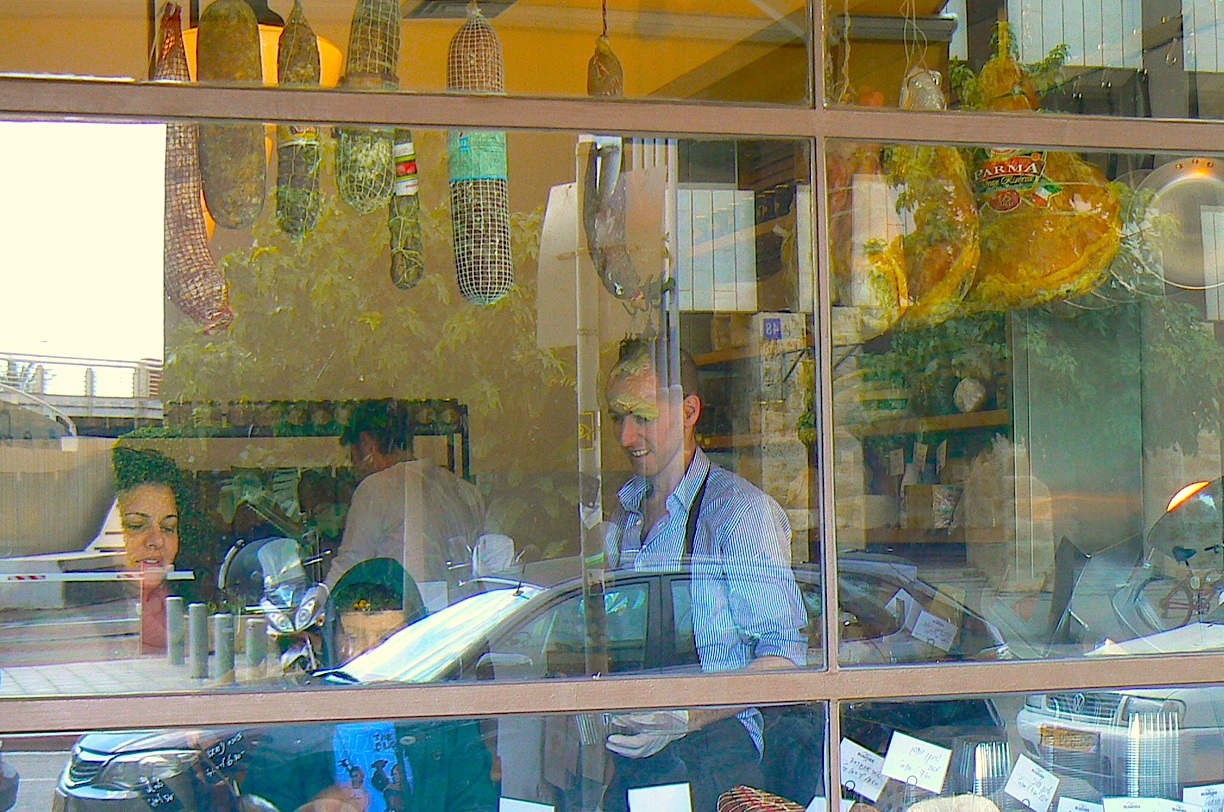 My first inclination was to
disbelieve my nose. The importation of pork (and other
non-kosher products) is illegal in Israel, and
though the domestic raising and consumption of pigs is
allowed, it’s not something that you see. Or, in this
case, smell.
My first inclination was to
disbelieve my nose. The importation of pork (and other
non-kosher products) is illegal in Israel, and
though the domestic raising and consumption of pigs is
allowed, it’s not something that you see. Or, in this
case, smell.
That’s when I saw
 it: A gorgeous display of imported Italian
and American sausages hanging in the window, a
glistening Iberico ham just off to the side of the
cheese counter, all a few steps from an avalanche of
prepared foods and breads and pastas. It was like the
perfect lovechild of New York’s Dean & Deluca and
Paris’s Fauchon. Young families and morning-after
couples and grande
dames prowled around. At
Delicatessen, they told me that no one gives them a hard
time and left it at that. Fuzzy, I know.
it: A gorgeous display of imported Italian
and American sausages hanging in the window, a
glistening Iberico ham just off to the side of the
cheese counter, all a few steps from an avalanche of
prepared foods and breads and pastas. It was like the
perfect lovechild of New York’s Dean & Deluca and
Paris’s Fauchon. Young families and morning-after
couples and grande
dames prowled around. At
Delicatessen, they told me that no one gives them a hard
time and left it at that. Fuzzy, I know.
This was Israel?
Indeed. Israel, which has always boasted a melting-pot of cuisines, is a must-visit destination for serious eaters right now. What we think of as typical Jewish food in the United States is, in general, limited to two traditions: The Eastern European and the grandmotherly. And Middle Eastern food, for too many people still, is assumed to be of the You Don’t Mess with The Zohan sort: Hummus and baba ghannouj, falafel and shawarma and the occasional kefta.
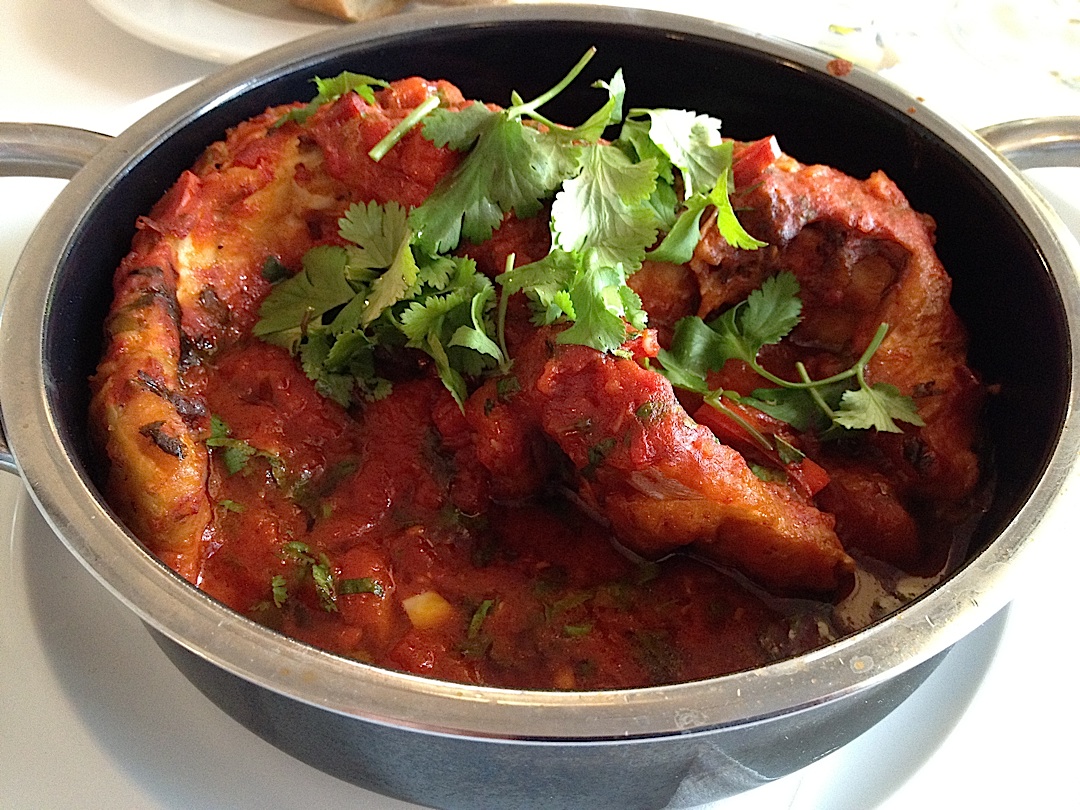 But Israel, which finds itself at
the almost perfect intersection of Western, Middle
Eastern, and North African influences, is home to one of
the more varied and interesting food traditions I’ve
encountered recently. At Delicatessen, for example, I
tucked into a serving of chraime (left) that served
as a direct savory conduit to North Africa: a meaty,
snowy white steak of fish had managed to absorb all the
spice heat and aromatic intensity of its tomato braising
liquid. All of it was thickened up with generous chunks
of potato, and custom made for the dipping of hunks of
bread. Dizzyingly savory kreplach, the pasta skins all
slippery and muslin-thin and topped with a frizzle of
sweet-smoky onions, would, I fear to say, put any Jewish
bubbe’s to
shame.
But Israel, which finds itself at
the almost perfect intersection of Western, Middle
Eastern, and North African influences, is home to one of
the more varied and interesting food traditions I’ve
encountered recently. At Delicatessen, for example, I
tucked into a serving of chraime (left) that served
as a direct savory conduit to North Africa: a meaty,
snowy white steak of fish had managed to absorb all the
spice heat and aromatic intensity of its tomato braising
liquid. All of it was thickened up with generous chunks
of potato, and custom made for the dipping of hunks of
bread. Dizzyingly savory kreplach, the pasta skins all
slippery and muslin-thin and topped with a frizzle of
sweet-smoky onions, would, I fear to say, put any Jewish
bubbe’s to
shame.This, then, is what it’s like to eat in Israel right now: The old and the new, the traditional and the decidedly iconoclastic (that Iberico, for example), co-exist with a breathtaking sense of harmony and excitement.
From a food standpoint, the timing of this trip to Israel, sponsored by the Israeli Ministry of Foreign Affairs and focused on the country’s burgeoning, exciting wine industry (more on that later), couldn’t have been better, especially to a native Philadelphian like me: With Zahav, a fantastic, ambitious Israeli restaurant in my home town and Middle Eastern spices and other ingredients finding their way into food all over town, the chance to eat and explore the foods right now in situ could not have been more fortuitous.
The most trenchant thing I was struck by in Israel, specifically, both in Tel Aviv and in Jerusalem, is that so much of its most interesting food is being guided by the same focus on local, artisanal, or otherwise carefully produced components as we’re seeing in the States, regardless of the genre.
North Abraxas, a relatively new restaurant in Tel Aviv, has generated a love-it-or-hate-it response locally, the hipster-ish vibe and butcher-paper-covered tables turning off some, the rustic décor and simple, ingredient-focused food charming others. I found myself firmly in the second group and couldn’t get enough of the gutsily simple procession of dishes. It takes baytzim, indeed, to serve a char-blackened head of cauliflower with nothing more than salt and olive oil, but there it was in all its smoky glory: As elemental and satisfying as anything you’d find in Philly or New York or LA.
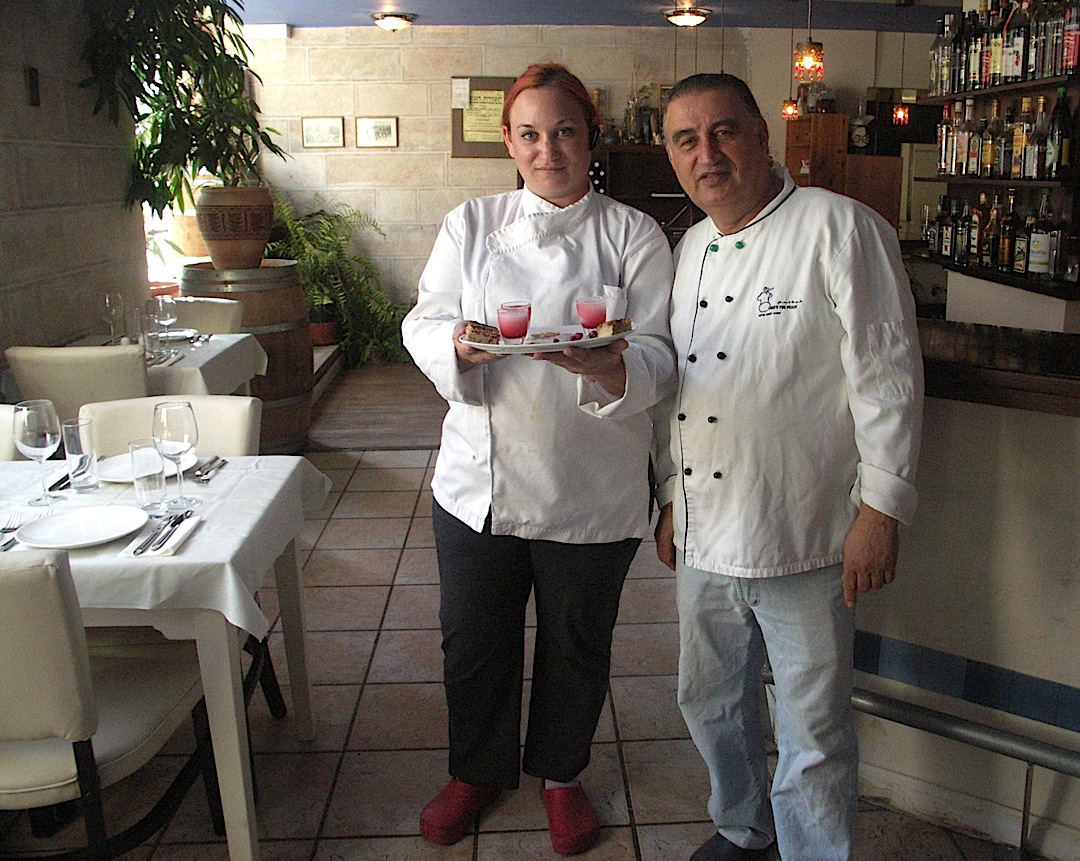 At Delicatessen,
it wasn’t just the meats that evidenced this allegiance
to the artisanal; even the cheeses, from Barkanit
Dairy’s “Corsica” double-crème goat's cheese to
Schwartz Dairy’s sticky, fruity sheep’s cheese, so much
of the product on offer there was directly tied to the
efforts of one or a group of dedicated artisans.
At Delicatessen,
it wasn’t just the meats that evidenced this allegiance
to the artisanal; even the cheeses, from Barkanit
Dairy’s “Corsica” double-crème goat's cheese to
Schwartz Dairy’s sticky, fruity sheep’s cheese, so much
of the product on offer there was directly tied to the
efforts of one or a group of dedicated artisans.In Jerusalem, the legendary restaurant Eucalyptus, in the arts district, presided over by local Slow Food hero Chef Moshe Besson (left), is generally agreed to be among the best in the country. Hyper-local ingredients--hyssop, pomegranate syrup, date honey, massive Jerusalem sage leaves--are employed in the service of thoroughly modernizing preparations that are often deeply familiar. I still don’t know how he did it, but Chef Besson’s chicken, vegetables, and rice made me rethink everything I thought I knew about poultry in general and traditional Jewish food in particular. In its deceptive simplicity, in its respect for the inherent flavor of each individual component, it was both thoroughly modern and deeply rooted in tradition.
Then there’s the use of complex spice blends that zips throughout so many meals in Israel, from the seemingly humblest shawarma; I had a particularly cardamom-perfumed example in Jaffa at Bino; their shawarma sandwiches are generous enough for two, and flavorful enough for four) to the most complex dinners. We’re seeing this more and more in the States, too. In recent years, Israeli-born spice blender (and accomplished chef) Lior Lev Sercarz, of La Bôite à Épice in New York, has had an important impact on a number of restaurants--Le Bernardin among them--bringing an intriguing whiff of exoticism and excitement to a remarkable range of preparations. Recently, for example, Chef de Restaurant William DiStefano of the Fountain at the Four Seasons Hotel Philadelphia has been employing La Bôite’s complex flavors in his new tasting menus; a grouper medallion tagine, amped up with a rose petal - cardamom - cumin blend, was a wildly delicious success.
As the world continues to shrink, to grow ever more interconnected, it only makes sense that we’ll continue to see more and more cross-pollination of food cultures from around the world. In Israel, it’s been like this for millennia, which is what makes exploring the country’s food scene right now such an intellectual and gustatory revelation.
The last time I’d visited Israel was back in 1996--a lifetime in culinary terms, an eye-blink in the history of this ancient land. I can only imagine what it’ll be like in another 15 years or so. Whatever happens, I have faith that it will be as exciting, delicious, and rewarding as it is right now. Perhaps even more so.
Travel Note: I visited Israel in
late February, when rhetoric had reached a rather
uncomfortable level in the supposed lead-up to the
potential pre-emptive attack on Iran and its nuclear
facilities. I felt safe the entire time--security in
Israel is among the best in the world--but most
Israelis I spoke with privately told me that they
were quite nervous. For all the focus on the
political instability of the region as a whole,
Israel is a remarkably safe place to visit. Still,
if you’re planning a trip, keep an eye out for
what’s happening geopolitically. If an attack on or
by Iran seems imminent, or if the violence in Syria
begins to spill over its borders in earnest, then
Israel may not be the best place to visit just then.
But on the whole, I felt safer in Tel Aviv and
Jerusalem in February than I generally do in certain
neighborhoods not far from my apartment in
Philadelphia.
Flight Note:
I flew El Al both to and from Tel Aviv, and was
generally happy with the service. If you’re flying
economy class, however, be warned: I purchased a
premium economy seat for the flight to Tel Aviv on a
Boeing 777-200, and it was among the best $59 I could
have spent. The bulkhead seat boasted ample legroom,
and made for a very pleasant flight. Flying back to
JFK on a Boeing 747-400, however, the same $59 bought
me a bulkhead seat with less legroom than a standard
coach seat offered. The seat was uncomfortably close
to the bulkhead, and, as there was nowhere to place my
legs if I wanted to stretch them out, it proved to be
a problem. The flight crew was as accommodating as
they could be, and friendly the entire time, moving me
to an aisle preferred economy seat from my middle one,
but my recommendation would be to check the
configuration of the plane you’ll be flying before
making a spur-of-the-moment decision and spending the
$59 at the check-in counter.
Brian Freedman is
a food, wine, spirits, and travel writer, and wine
consultant in Philadelphia;
www.BrianFreedmanPhiladelphia.com.
NEW
YORK CORNER
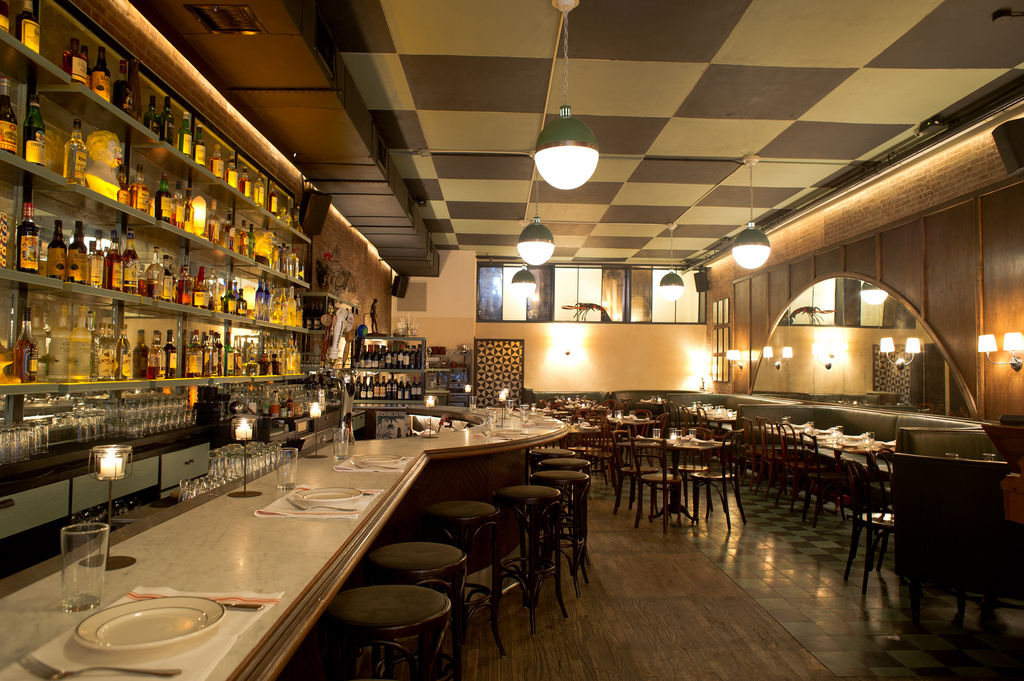 ACME
ACME
9
Great Jones Street (near Lafayette Street)
212-203-2121
acmenyc.com
It
is
unusual for me to include a negative report in
this space for the simple reason that I don't want
to waste it on bad restaurants. But once in a
while a restaurant opens that is so ballyhooed for
reasons that seem more to do with advance
publicity and clientele than food or service that
I feel readers will want to know about it, good or
bad.
In the case of Acme, in NoHo, the
buzz was all about chef Mads Reflund's coming to
America after having launched, with partner Rene
Redzdepi, so-called "New Nordic Cuisine" at the
Copenhagen restaurant Noma, last year voted the best
restaurant in the entire world in the San Pellegrino
Restaurant Awards, an event that made headlines
everywhere and led to Redzepi making Time Magazine’s
100 most important people of 2012. Noma has two
Michelin stars.
I will say nothing about the credibility of
those awards (I was on the panel one year) except to
note that the 800 food industry voters are supposed to have
eaten at the restaurant they vote for within the
recent past. But, given that Noma is booked months in
advance, the odds are near impossible that so many
voters could even have gotten a reservation. Nor will I
comment on the cuisine at Noma since I am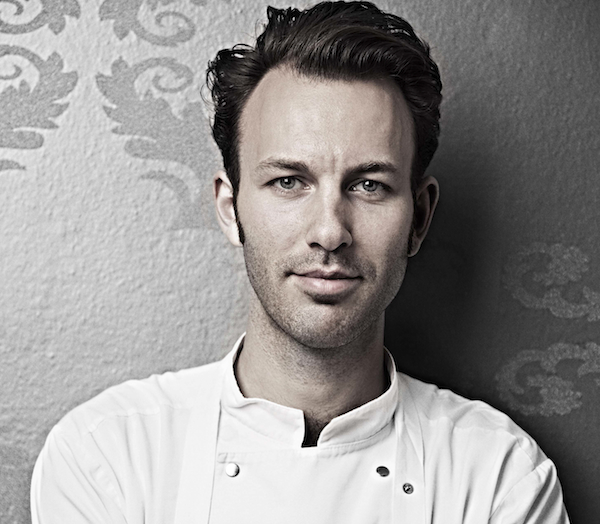 one of those unable to snag a rez there when I visited
Copenhagen two years ago.
one of those unable to snag a rez there when I visited
Copenhagen two years ago.
But whatever Noma is doing, Acme probably is
not. In
fact, Reflund (right)
has contended that Acme’s food is not specifically New
Nordic, and the current menu does nothing to make me
think otherwise, aside from a lot of simply cooked
vegetables. What
the menu does contain is a lot of uninspired dishes
that seem simplistic and, for the most part, taste
that way.
Neither is there anything inspired
about the gastro-pub look of the place, for 20 years
before a Cajun restaurant of the same name. Tables are
close together so waiters will inevitably knock into
your chairs; the bar is set for those who wait. . .
and wait. . . and wait for a table or choose to eat
there. At 7 PM when we arrived the place was loud, but
not impossibly so, but at 8 PM they turned on the
music, and at 9 PM they turned the music way up,
making conversation impossible.
The service staff runs the gamut from harried
to clueless. When I asked for some used dishes (thick
diner china) and flatware to be removed, the waiter
snapped, “Yeah, yeah, yeah.” We didn’t get any food
for 45 minutes, then waited another 45 for the main
courses to arrive. Asking for the check took a while
too.
So
what about the food? Reviews thus far have ranged from
harsh to tepid; I found the food pretty dreary,
lacking fat and savoriness, despite flavorings like
like bacon vinaigrette and pickled vegetables. There
is a "Raw" section full of items like raw, frozen
sliced foie gras with a raw langoustine. (Note well:
raw crustaceans like shrimp and langoustine can he
highly dangerous even if very fresh; if you’re going
to get sick on food, those will be the chief
culprits.)
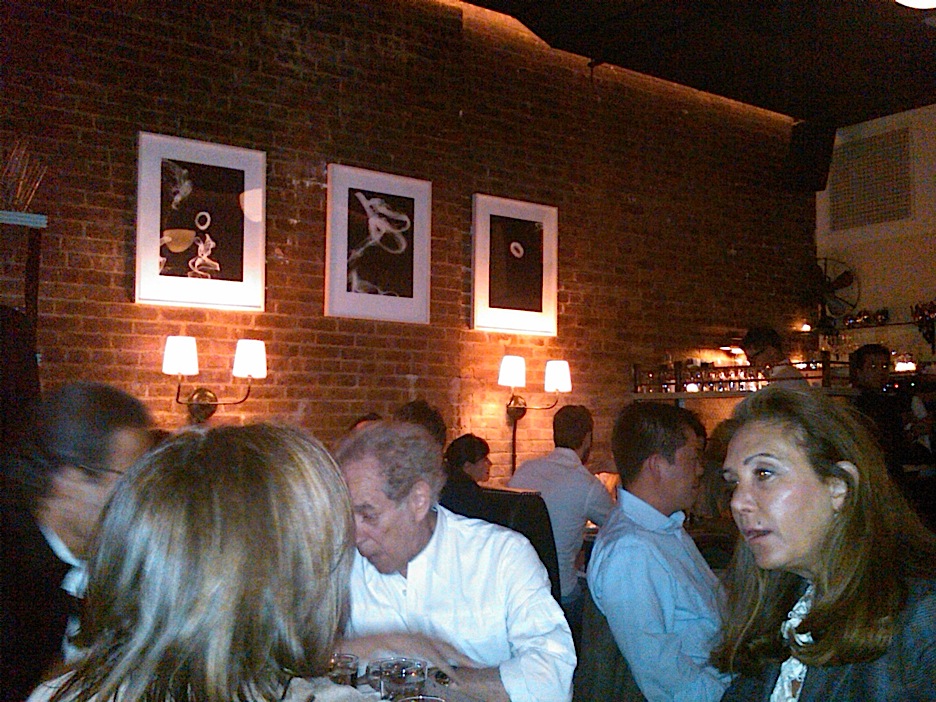 Of the “Cooked”
small plates, duck in a jar with pickled vegetables
was utterly bland. “Country toast” was merely toast
smeared with Brie and butternut squash. Pearl
barley and clams and scallops with a roasted sunchoke
broth had very little barley and too much broth,
turning this to a seafood gruel.
Of the “Cooked”
small plates, duck in a jar with pickled vegetables
was utterly bland. “Country toast” was merely toast
smeared with Brie and butternut squash. Pearl
barley and clams and scallops with a roasted sunchoke
broth had very little barley and too much broth,
turning this to a seafood gruel.
Then
came
one of the most offensive things I’ve ever been
served--this under the "Soil" section: a “Black
heirloom carrot [the menu said carrots, plural], with
salted lardo,
pine, and blood orange. What came was a single
six-inch carrot cut into four slices, dressed and put
on the plate—for $12!
On
to
the main courses, which included bland Arctic char
with squash blossoms, sherry vinegar and capers, and
an equally dreary black sea bass with green tomatoes,
cardamom, vanilla and dandelion. Both needed fat to
bring them alive. Chicken and eggs was a juicy but
tasteless chicken (was it basted at all?) in a pot
with a fried egg on top. Hand-cut French fries with an
oyster mayo were very good.
We were not dying for dessert but ordered
dried-out beignets that were eggy tasting, and a scoop
of ice cream with a lace-like sheet of chocolate.
By then, the crowd was no thinner, just a lot
louder, We exited into the street noise of NYC, which
was quite literally a relief and a release from the
frantic, loud atmosphere inside.
Assuming that Acme at least has its
roots in Noma’s revolutionary Nordic Cuisine, I don’t
know if Nordic Cuisine is a lot of hype or that Acme
is just not a very good place to eat. I suspect a
bit of both.
Acme is open
nightly for dinner. Appetizers $10-$18.
❖❖❖
NOTES FROM THE WINE CELLAR
The Doglianis of Piedmont
by Mort Hochstein
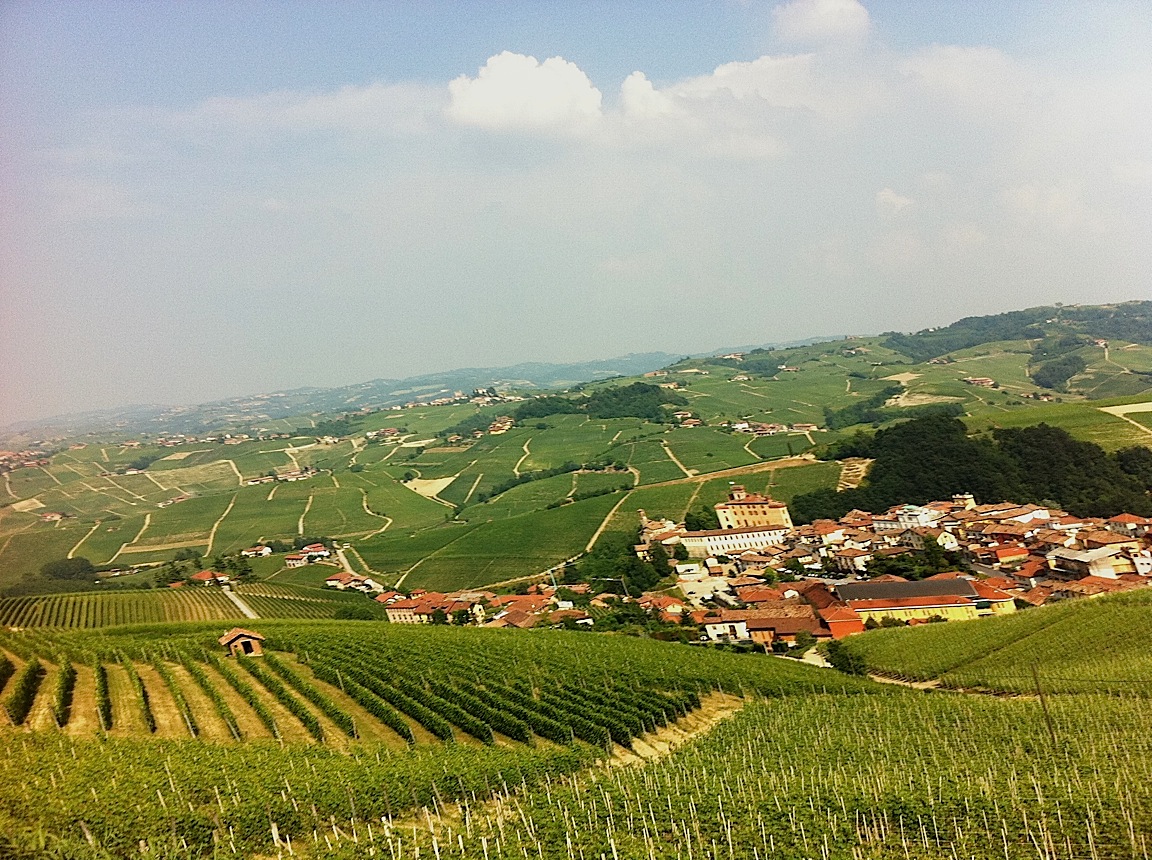
As
a wine neophyte on my first trip to the Piedmont in
the early eighties, I had a bare smattering
of knowledge of Italian wine. I knew about
Chianti and Valpolicella and Soave and Riunite,
basically low-priced wines, at a
time when there was a feeling that all Italian wines
were, and should be, cheap.
And
then I was exposed to Barolo and Barbaresco, which we were
told were the
"King and Queen" of Italian wines, and sold in a
much more elevated price range. Of course, a similar nobility
was also applied to Brunello as our wine education
improved, 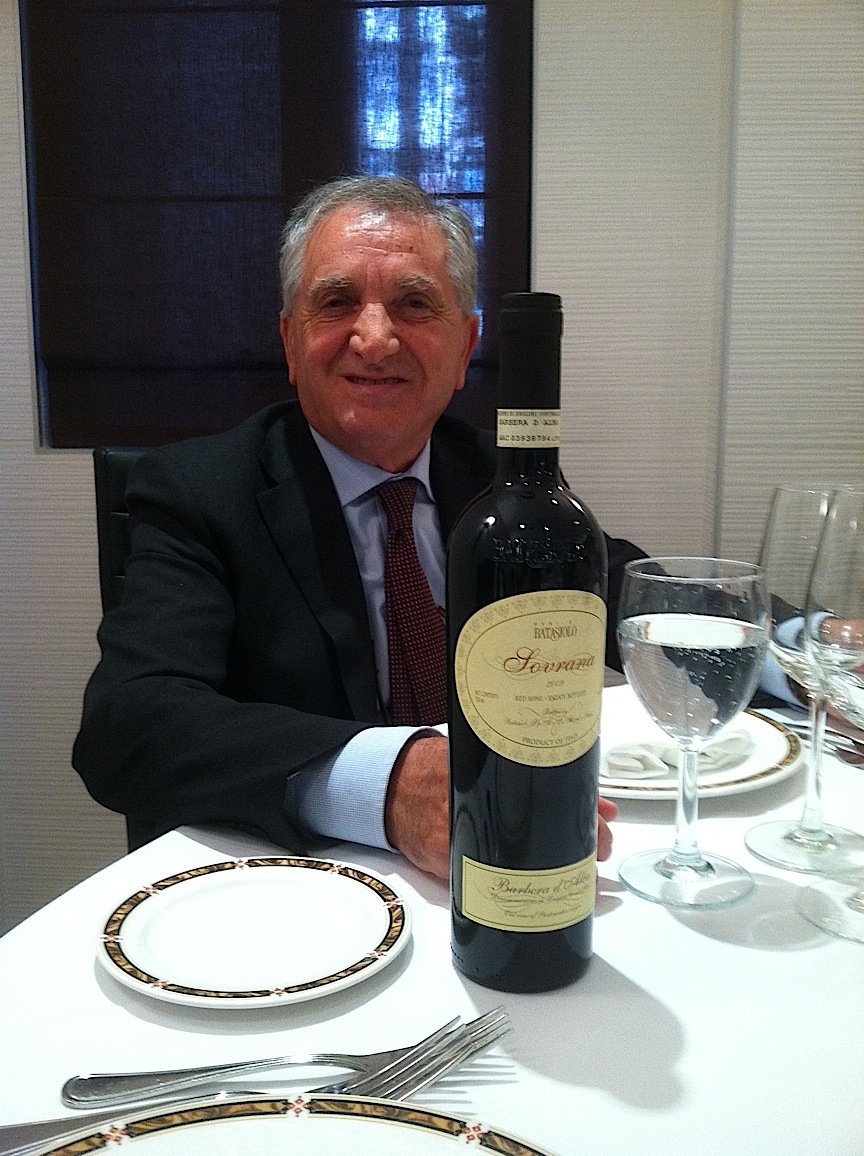 but Brunello is from Tuscany
and our concern here is the Piedmont.
but Brunello is from Tuscany
and our concern here is the Piedmont.
I
approached Barolo
and Barbaresco reverently,
forewarned that they were slow to become drinkable.
In those days, the common
belief was that
Barolo
needed to
rest in cool, dark
cellars for
a decade or
more before being
opened. That was
true of many of the venerable great names—Prunotto, Conterno, Gaja and
Vietti, and the majority of vignerons who structured
their product for long aging.
But the eighties were a time of
change in Piedmont, and producers like Renato
Ratti, Enaudi and Pio Cesare recognized that few consumers have the necessary
deep cellars and deep
pocketbooks to wait for a wine to mature, and they adjusted
their vinification toward fine wines designed for
consumption much earlier.
There
is a pantheon
of producers
in the Piedmont whose names are
familiar to most
wine lovers. Beni Di Batasiolo is a late
bloomer, having
been in production
for just a little more than three decades,
it still lingers under
the radar, despite churning out on-
tenth of the Barolo produced
by the region’s 800 vignerons. For generations,
dating
back to 1875, the Dogliani family had grown grapes,
produced and distributed wine. Their own production
went primarily into bulk wine, until they established
the Fratelli
Dogliani label
in 1957 and began bottling the product, then
primarily Dolcetto.
The big move into Barolo came in 1978 when
the Doglianis
acquired
the historic Chiola winery in a hamlet also
named Dogliani, at
La Morra, one of the area’s
most revered vineyards. They created the current
brand, Beni di Batasiolo, beni meaning
farmhouses with vineyard, and since then the empire has
expanded to approximately 250 acres under
cultivation in four growing regions, yielding red,
white, rosé, and sparkling wines. Bene di
Batasiolo, under a fourth generation member of the
family, CEO Fiorenzo
Batasiolo
(above), is the
largest single producer in the Piedmont, releasing
some 400,000 cases of wine annually, second only to
giant cooperatives serving the
majority of the region’s 800 growers.
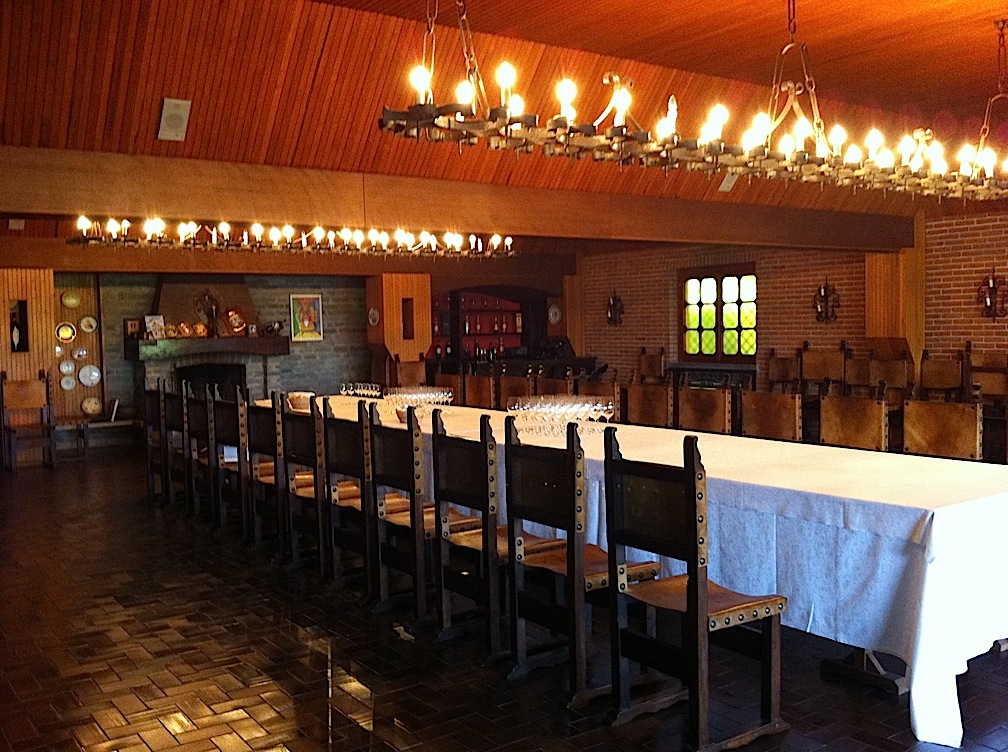 Batasiolo
produces five single vineyard Barolos, one riserva and one
classico.
“Barolo is our
DNA,” says U.S. sales manager Ricardo Marchi
discussing the seven bottlings at a tasting at SD26 in Manhattan
that showcased the 2007 Barolo Classico from the storied
hills of
Serralunga. It lists at $40, a relatively
friendly price for Barolo, and though still young, it showed
strong black fruit on the nose, well-tamed tannins
on the palate, with an intense dark cherry flavor, and
long aftertaste.
Batasiolo
produces five single vineyard Barolos, one riserva and one
classico.
“Barolo is our
DNA,” says U.S. sales manager Ricardo Marchi
discussing the seven bottlings at a tasting at SD26 in Manhattan
that showcased the 2007 Barolo Classico from the storied
hills of
Serralunga. It lists at $40, a relatively
friendly price for Barolo, and though still young, it showed
strong black fruit on the nose, well-tamed tannins
on the palate, with an intense dark cherry flavor, and
long aftertaste.
While
Barolo may be
Batasiolo’s DNA, I suspect that Dolcetto, an everyday
wine, at
about $16,
is its
backbone.
A
blend of grapes from several Batasiolo vineyards, it is a
"serious” Dolcetto, with greater aging capacity
than, say, a typical Dolcetto d’Alba.
The best Dolcettos are fine for about seven
years. Dogliani's ’08 is deep purple with black raspberry and
plum flavors and the soft tannins that typify the
winery’s approach, well balanced
and should drink well long beyond the
normal age range.
In
roughly the same price range, the
Batasiolo 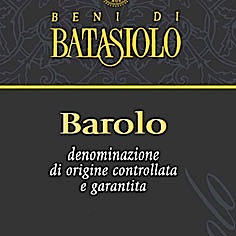 Barbera d’Alba
2008 is
an intense ruby-tinted quaffer, dry and full-bodied
with balanced
acidity and a velvety finish.
Barbera d’Alba
2008 is
an intense ruby-tinted quaffer, dry and full-bodied
with balanced
acidity and a velvety finish.
Vignerons of the
Piedmont often
identify
Barbera as their everyday wine, and this one is the house
wine in many Italian restaurants. Barbaresco, like
Barolo, is
also made from Nebbiolo grapes, and is generally
described as more feminine. The 2009, at about $35
retail, was
softer and more immediately accessible than its
coddled sibling, which matures in oak for a minimum
of three years and two years in bottle prior to
release.
I’m a Moscato junky and enjoy every
variation of the grape
from the Moscato d’Oro of California to the
Batasiolo Classic Moscato D’asti. Sweet on the nose, honeysuckle
sweet and soft on the palate with an
aromatic aftertaste, at $16 it is a great mate for desserts or
cheeses. Along
with a range
of red and white wines, including a Gavi and an
Arneis, Batasiolo also entices visitors with a 38-room
luxury hotel and spa (above).
❖❖❖

ACTUALLY, EMILY POST ALWAYS
RECOMMENDED USING TURPENTINE

007 might switch from "shaken not stirred
martinis" to brewskis,
specifically Heineken, thanks to
has struck with the spy film franchise. Actor Daniel
Craig (right)
will also appear in a commercial for Heineken, whose
'[James Bond] is a perfect fit for us. [He is]
the epitome of the man of the world.'
❖❖❖
Any of John Mariani's
books below may be ordered from amazon.com.
 |
My latest book, which just won the prize for best book from International Gourmand, written with Jim Heimann and Steven Heller, Menu Design in America, 1850-1985 (Taschen Books), has just appeared, with nearly 1,000 beautiful, historic, hilarious, sometimes shocking menus dating back to before the Civil War and going through the Gilded Age, the Jazz Age, the Depression, the nightclub era of the 1930s and 1940s, the Space Age era, and the age when menus were a form of advertising in innovative explosions of color and modern design. The book is a chronicle of changing tastes and mores and says as much about America as about its food and drink.
“Luxuriating vicariously in the pleasures of this book. . . you can’t help but become hungry. . .for the food of course, but also for something more: the bygone days of our country’s splendidly rich and complex past. Epicureans of both good food and artful design will do well to make it their coffee table’s main course.”—Chip Kidd, Wall Street Journal.
“[The menus] reflect the amazing craftsmanship that many restaurants applied to their bills of fare, and suggest that today’s restaurateurs could learn a lot from their predecessors.”—Rebecca Marx, The Village Voice. |
"Eating Italian will never be the same after reading John Mariani's entertaining and savory gastronomical history of the cuisine of Italy and how it won over appetites worldwide. . . . This book is such a tasteful narrative that it will literally make you hungry for Italian food and arouse your appetite for gastronomical history."--Don Oldenburg, USA Today. "Italian
restaurants--some good, some glitzy--far
outnumber their French rivals. Many of
these establishments are zestfully described
in How Italian Food Conquered the World, an
entertaining and fact-filled chronicle by
food-and-wine correspondent John F.
Mariani."--Aram Bakshian Jr., Wall Street
Journal.
"Equal parts
history, sociology, gastronomy, and just
plain fun, How Italian Food Conquered the
World tells the captivating and delicious
story of the (let's face it) everybody's
favorite cuisine with clarity, verve and
more than one surprise."--Colman Andrews,
editorial director of The Daily
Meal.com. "A fantastic and fascinating
read, covering everything from the influence
of Venice's spice trade to the impact of
Italian immigrants in America and the
evolution of alta cucina. This book will
serve as a terrific resource to anyone
interested in the real story of Italian
food."--Mary Ann Esposito, host of PBS-TV's
Ciao
Italia. "John Mariani has written the
definitive history of how Italians won their
way into our hearts, minds, and
stomachs. It's a story of pleasure over
pomp and taste over technique."--Danny Meyer,
owner of NYC restaurants Union Square Cafe,
Gotham Bar & Grill, The Modern, and
Maialino.
|
 |
 |
 |
 |
 |
 |
 |
 |
 Everett Potter's Travel Report:
Everett Potter's Travel Report: 
 Eating Las Vegas
is the new on-line site for Virtual Gourmet
contributor John A. Curtas., who since 1995
has been commenting on the Las Vegas food
scene and reviewing restaurants for Nevada
Public Radio. He is also the
restaurant critic for KLAS TV, Channel 8 in
Las Vegas, and his past reviews can be
accessed at KNPR.org.
Click on the logo below to go directly to
his site.
Eating Las Vegas
is the new on-line site for Virtual Gourmet
contributor John A. Curtas., who since 1995
has been commenting on the Las Vegas food
scene and reviewing restaurants for Nevada
Public Radio. He is also the
restaurant critic for KLAS TV, Channel 8 in
Las Vegas, and his past reviews can be
accessed at KNPR.org.
Click on the logo below to go directly to
his site.

Tennis Resorts Online: A Critical Guide to the World's Best Tennis Resorts and Tennis Camps, published by ROGER COX, who has spent more than two decades writing about tennis travel, including a 17-year stretch for Tennis magazine. He has also written for Arthur Frommer's Budget Travel, New York Magazine, Travel & Leisure, Esquire, Money, USTA Magazine, Men's Journal, and The Robb Report. He has authored two books-The World's Best Tennis Vacations (Stephen Greene Press/Viking Penguin, 1990) and The Best Places to Stay in the Rockies (Houghton Mifflin, 1992 & 1994), and the Melbourne (Australia) chapter to the Wall Street Journal Business Guide to Cities of the Pacific Rim (Fodor's Travel Guides, 1991).


The Family Travel Forum - A
community for those who "Have Kids, Still Travel" and
want to make family vacations more fun, less work and
better value. FTF's travel and parenting features,
including reviews of tropical and ski resorts, reunion
destinations, attractions, holiday weekends, family
festivals, cruises, and all kinds of vacation ideas
should be the first port of call for family vacation
planners. http://www.familytravelforum.com/index.html
ALL YOU NEED BEFORE YOU GO


MARIANI'S VIRTUAL GOURMET
NEWSLETTER is published weekly. Editor/Publisher: John
Mariani.
Contributing Writers: Christopher Mariani, Robert Mariani,
John A. Curtas, Edward Brivio, Mort Hochstein,
Suzanne Wright, and Brian Freedman. Contributing
Photographers: Galina Stepanoff-Dargery,
Bobby Pirillo. Technical Advisor: Gerry McLoughlin.
To un-subscribe from this newsletter,click here.
© copyright John Mariani 2012
